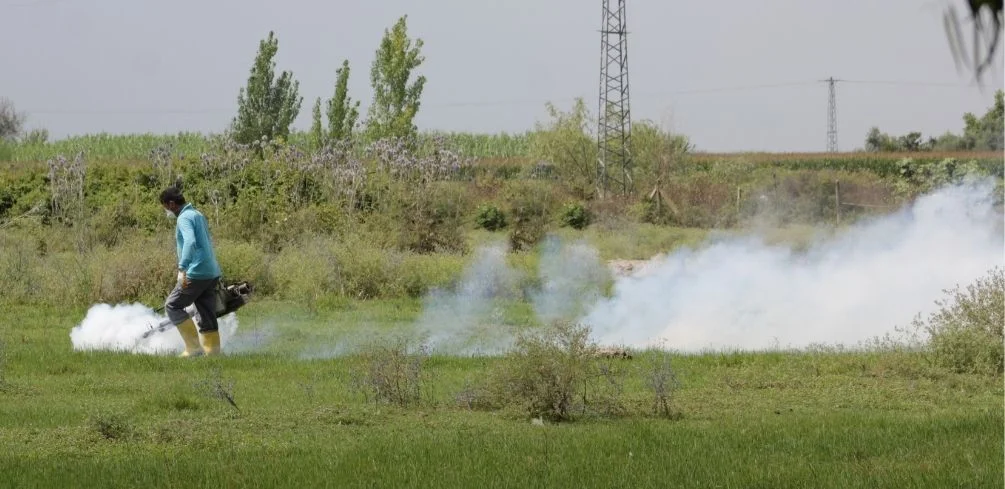Thermal fogging employs heat to transform liquids into fog. A liquid solution is injected into a heated barrel, so it evaporates rapidly. Thermal fog is typically dense and easily visible. Cold fogging does not require heat. The cold fogging machine converts a liquid solution into airborne particles by applying high pressure and swirling airflow to the solution.
The main difference between thermal fogging and cold fogging is that one requires heat and the other doesn’t. In this piece, we dive deeper into this topic and give you other differences between these two fogging techniques.
Cold Fogging Vs. Thermal Fogging: What Are The Differences?
Cold fogging and thermal fogging are both methods of disinfecting and spraying but they are not the same. Special machines that transform solutions into fog are used in the production of both forms of fogging.
Besides disinfection and pest control, these strategies are also beneficial in other areas. You have the option of using either type of fogging to satisfy your need.
What is Cold Fogging?
In cold fogging the fog machine does not require the use of heat. The machine transforms a liquid solution into airborne particles by applying high pressure to the solution and spinning the airflow around the solution during the process.
As soon as the nozzle is turned on, a cool fog begins to flow out. The particles disintegrate as they go across the room.
A cold fogging machine is automatic and does not require the assistance of an operator after it has been turned on.
Cold fogging is a highly safe procedure that can be used to disinfect large areas without causing any damage. The size of the droplet can be regulated by the operator through the use of a knob.
Thermal Fogging
Thermal fogging is the process of disinfecting or spraying with a fogger that warms and transforms solutions into fog. The particles are extremely tiny in size.
After the liquid solution is injected into the heated barrel, the heat causes it to evaporate.
The fog produced in thermal fogging is often dense and easily visible. As it is being sprayed, you can see the area where it is being sprayed.
The thermal fogging machine must be attended to at all times by a trained operator. Because it gets extremely hot, a technician is required for the sake of safety.
Typically, in thermal fogging, the operator will begin in the far corner of the room, with the fogger pointing in the direction of the corner in question. Then they will exit the room while the thermal fogging machine produces the fog.
Energy Source and Operational Differences: Cold Fogging Vs. Thermal Fogging
Thermal fogging machines require the usage of fuel. Propane gas is used in the majority of personal-use foggers. Instead of using propane fuel, cold fogging devices operate on electricity or battery power.
Thermal foggers are equipped with heated barrels, which are preheated to extremely high temperatures using fuel to ensure maximum efficiency.
In thermal fogging, a high number of particles of extremely small size are produced as a result, leading to a dense cloud of fog when the fogger is operated at full capacity.
In cold fogging, the machines are fitted with motors that generate a high-power, low-pressure air stream, which is used for cold fogging. When the fogger is in operation, the cold fogging solution is stored in a tank and used to create fog.
The fogging liquid is forced out of the tank by a pump. The solution is then injected into a particular nozzle that is designed in such a manner that the airflow is swirled as it passes through it.
The high air pressure produced by the engine aids in the spraying of the fogging liquid through the nozzle, dividing it into tiny particles as it does so.
When compared to thermal fogging, the process of cold fogging is generally quieter, which is particularly useful in metropolitan centers where noise may be a problem.
Pros and Cons: Cold Fogging Vs. Thermal Fogging
Each of these methods of fogging comes with its benefits and downsides. Let us now look at the major pros and cons of the two fogging techniques:
Pros of Thermal Fogging
Dense, clearly visible fog
Keeping track of and controlling the flow of fog in thermal forging is simple because the fog is visible in all directions. In order for the fog to reach specific locations in many applications, it will be necessary to manage and direct it.
In thermal fogging, the visual fog provides your clients with peace of mind because they can see you doing something to address their problem, which increases their trust in your abilities.
In the process of thermal fogging, it is easier for you to avoid direct contact with the fog because of fog visibility. This holds true for those who are simply watching.
When you have the ability to see the fog, which may contain compounds that are harmful to your health, you can avoid it more easily than when it is invisible.
Can be done in hidden areas
Thermal fogging machines produce droplets that are extremely small in comparison to their surroundings. Because of the small droplet size produced by thermal fogging, they have the ability to spray a higher density of droplets.
This is because of these two factors, thermal fogging is an excellent choice for insect control applications.
Thermal fogging is capable of penetrating extremely small areas with its particles because of its small size.
It is more likely that the smaller particles will remain suspended in the air for a longer period of time when used in outdoor applications. As a result of this, the likelihood that fog will come into contact with flying insects such as mosquitoes is significantly high.
Thermal fogging is efficient
Thermal fogging is more efficient than cold fogging because it utilizes a lower concentration of the insecticide, sprays more insecticide with less energy, and can treat an area of the same size in a shorter amount of time than cold fogging devices.
Cons of Thermal Fogging
The most significant disadvantage of thermal fogging may be the high use of fuel.
Thermal fogging is an expensive endeavor due to the high cost of fuel needed in the process. You’ll have to replenish or replace these when they run out, which can happen rather frequently if you’re fogging a large area regularly.
Fogging can become more expensive as a result of this.
The fuel can have a strong stench, which may be unpleasant for the person operating the fogger as well as for people near the fogging device. These compounds can leave greasy stains that are difficult to remove, which is an issue when it comes to fogging in enclosed spaces.
Pros of Cold Fogging
Cheaper than thermal fogging
When using cold fogging, fewer droplets of fogging liquid and fuel are used per application, resulting in a lower cost of application.
Because cold fogging requires the use of electricity, it is less expensive, does not leave behind any greasy residues that are difficult to clean, and poses a low fire hazard.
Cons of Cold Fogging
Almost invisible fog
The fog produced by cold fogging is almost completely invisible to the naked eye. It is far more difficult to monitor and regulate the direction of an invisible fog, which is especially true when fogging outside.
When it comes to mosquito control applications, this is a drawback.
Furthermore, onlookers will be unable to detect any symptoms of fog. This means that they will not be able to avoid it and may inhale pesticides or come into contact with them through their skin.
Droplets that are larger
Cold fogging produces larger particles. This means that in both indoor and outdoor settings, the cold fogging will be unable to penetrate the smallest and most difficult to reach areas.
In the case of mosquito control, larger particles will remain in the air for a shorter period and will have a lower probability of reaching all of the airborne mosquitoes in the surrounding region.
The Relationship between Cold Fogging and Thermal Fogging
Thermal fogging and cold fogging both allow you to use both water-based and oil-based solutions in your fogging operations.
It is much more environmentally friendly to use water-based formulations, which can also be used to fog plants and do not pose a fire hazard. Furthermore, water-based solutions are less expensive than oil-based solutions because they do not cause equipment corrosion.
Conclusion
Thermal fogging and cold fogging produce fog through distinct mechanisms, but the most significant variations are found in the areas of safety, operating efficiency, and fog dynamics.
According to the differences, cold fogging is slower than thermal fogging. Furthermore, for safety concerns, thermal fogging cannot be automated in the same way that cold fogging can.
Ultimately, it comes down to your personal preferences, abilities, and needs. However, in general, thermal fogging is best applicable outdoors, whereas cold fogging is best applicable indoors.
Next, let’s learn the difference between a fog machine and a smoke machine.
Please be careful and use at your own risk
None of the authors, contributors, administrators, or anyone else connected with Wild Fog, in any way whatsoever, can be responsible for your use of the information contained in or linked from these web pages.










